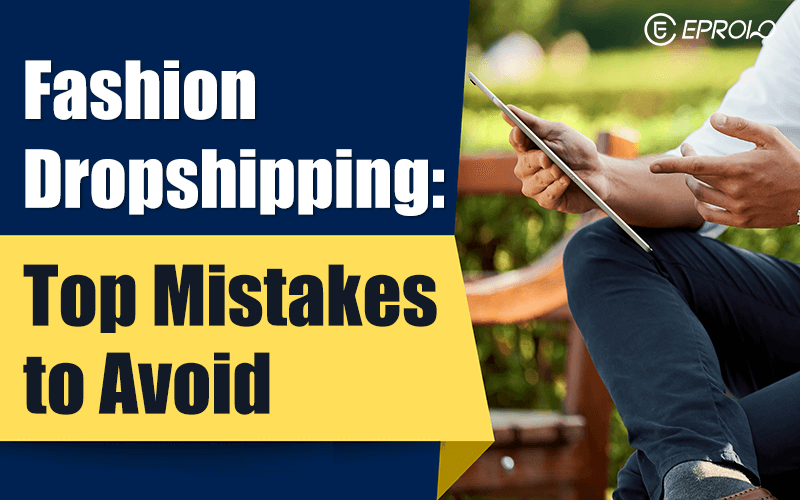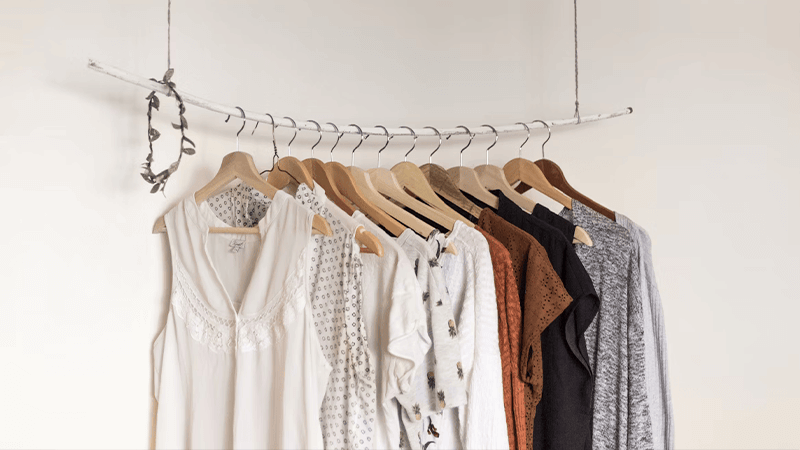Launching a fashion dropshipping store seems like a shortcut to success—beautiful items, low overhead, and a trend-hungry audience. But many first-time sellers find out the hard way: fashion is not just another product category. It’s fast-moving, highly personal, and packed with hidden challenges.
If you want to build a fashion brand that lasts, not just goes viral for a week, you need to avoid the common traps that trip up new dropshippers. First, let’s look at what sets fashion apart from other dropshipping niches.

Page overview:
How’s Fashion Dropshipping Special
Mistake 2: Ignoring Sizing Tools
Mistake 3: Relying on Generic Stock Photos
Mistake 4: Offering Too Many Choices at Once
Mistake 5: Trusting Suppliers Without Testing Them
Mistake 6: Overlooking Return and Exchange Policies
Mistake 7: Ignoring Seasonal Demand Shifts
How’s Fashion Dropshipping Special
Fashion items are all about style, not function. Unlike other dropshipping niches, fashion prioritizes self-expression and individuality over utility—which brings unique challenges and risks to your dropshipping business.
Style is Emotional—and Changes Fast
Most e-commerce products are bought to solve a problem. But people buy clothes to feel something: confident, comfortable, put-together. That emotional pull means fashion trends rise and fall fast. A bestselling blouse today could be outdated next month.
Fit is Personal
Speakers can be one-size-fits-all products; people care about sound quality and batteries. But fashion is different. Fashion choices depend on factors like your height, body type, personal style, and even your favorite color. It’s personal and physical, and it’s more complex to sell and often leads to higher return rates if the fit is off.
Pictures Sell the Product
Specs don’t close fashion sales. Photos do. They show the vibes, and they picture the dream styles. People want to see how a garment looks on real people, and picture themselves looking as good and chic; flat lays or mannequin shots are just not enough. A good image can build trust—while a bad one kills it instantly.
Seasonality Matters
You can sell a phone grip year-round. Not so with trench coats or swimsuits. Apparel demand changes by season, region, and even current events. Timing is everything.
Shoppers Expect a Smooth Experience
Fashion buyers are used to fast fashion platforms and polished online stores. They expect quick delivery, easy returns, and a seamless checkout. If your store feels clunky, they’ll shop elsewhere.
This blend of emotional shopping, fit challenges, and high expectations means fashion dropshippers need to be sharper and more strategic. With that in mind, here are the top mistakes to avoid.
Mistake 1: Style Over Texture
It’s tempting to fill your store with bold prints, trending cuts, and influencer looks. But if the fabric feels cheap or the stitching doesn’t hold up, you’ll lose repeat business—and rack up returns.
What to do instead: Always test product quality. Order samples from your dropshipping supplier, inspect the material, wear it, and see how it holds up. If you wouldn’t recommend it to a friend, don’t offer it to your customers.
Mistake 2: Ignoring Sizing Tools
A “medium” from one supplier might fit like an “extra small” in U.S. sizing. Without a clear guide, customers guess—and when the item arrives and doesn’t fit, they return it or leave a bad review.
What to do instead: Offer detailed, product-specific size charts. Translate international sizing into your target audience’s system, like Asian size to US size. Add notes like “runs small—consider sizing up.” Better yet, include model photos with height and size information.

Mistake 3: Relying on Generic Stock Photos
Stock images may show the item clearly, but they rarely show it honestly. Flat images or overly airbrushed models can create unrealistic expectations. If your customers receive a product that looks very different from the pictures, they feel disappointed—and may return the item or leave a bad review, which costs you a lot.
What to do instead: Use lifestyle photos whenever possible. Ask your supplier for real-model images or shoot your own flat lays and try-ons. You can also encourage user-generated content for future listings—authentic photos build trust and drive sales.
But real doesn’t mean unpolished, you can still use good lighting and flattering angles.
Mistake 4: Offering Too Many Choices at Once
It’s easy to get caught up adding dozens—or hundreds—of SKUs. More options might feel like more opportunities. But a bloated catalog confuses shoppers and slows down your store.
What to do instead: Start small. Build a capsule collection of your top picks—items you’ve tested, trust, and know how to sell. Monitor which products get clicks and sales, then expand with purpose. Focus beats clutter every time.
Mistake 5: Trusting Suppliers Without Testing Them
A good product isn’t enough. You also need a reliable supply chain. Slow shipping, inconsistent sizing, or out-of-stock surprises can ruin your store’s reputation.
What to do instead: Place sample orders to yourself first. Track delivery time, inspect the packaging, and evaluate communication. Work only with suppliers who are consistent, responsive, and transparent.
Pro tip: EPROLO offers product sourcing, branding building, and automated order fulfillment—all in one dropshipping platform. You can test fashion products directly through their system and use U.S. warehouses for faster delivery.
Mistake 6: Overlooking Return and Exchange Policies
Apparel returns are unavoidable. But too many new sellers don’t plan for them. If your return process is unclear or too slow, shoppers will hesitate to buy—or worse, demand chargebacks.
What to do instead: Offer a clear and easy return experience. With EPROLO, fashion sellers benefit from a 7-day no-questions-asked return policy for apparel. This gives customers peace of mind and helping you stand out from stores that don’t accept returns at all.
Mistake 7: Ignoring Seasonal Demand Shifts
Selling parkas in summer or crop tops in December? It might work for a few travelers—but not for the average shopper. Season mismatch is one of the fastest ways to slow down sales.
What to do instead: Refresh your store’s product lineup every 2–3 months. Use search data, fashion calendars, and even TikTok trend analysis to see what’s rising. Plan ahead—source autumn jackets before the weather cools, not after.
Mistake 8: Hiding or Guessing Shipping Times
Nothing frustrates fashion buyers more than waiting three weeks for a shirt they needed last weekend. Long or unclear shipping times lead to cancellations, refunds, and negative reviews.
What to do instead: Be transparent about delivery windows. Choose a dropshipping platform like EPROLO that provides real-time tracking, global warehouses, and U.S. shipping options. Show delivery estimates on product pages and in confirmation emails.
Building a Sustainable Fashion Dropshipping Business
Fashion buyers don’t just want clothes—they want reliability. When you focus only on what’s trending and forget about what people actually wear, feel, and experience, you risk turning new visitors into one-time buyers.
The truth is, fashion dropshipping works best when it’s treated like a real brand. And that starts with smart systems, dependable partners, and customer-first thinking.
With EPROLO, you don’t have to do everything alone. From branded packaging to automated fulfillment, and a clear return policy, it’s a platform that helps you stay competitive in the fast-paced fashion space—without overcomplicating the process.







